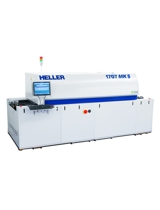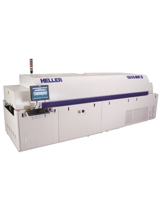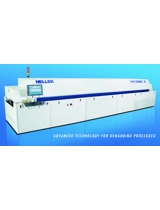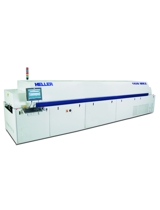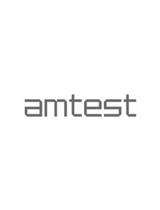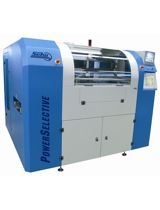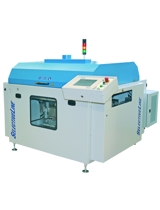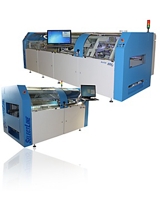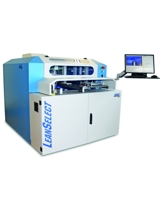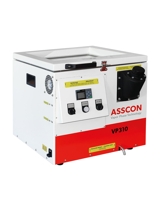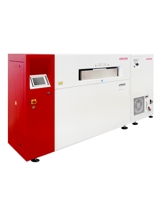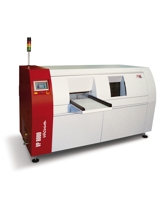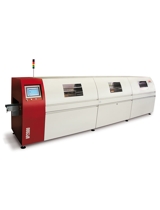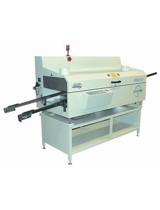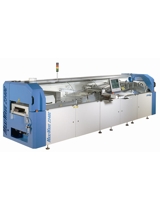Production equipment
Soldering and curing equipment
Reflow soldering
Reflow soldering is the most common method of attaching surface mount components to a circuit board. The goal of the reflow process is to melt the solder and heat the adjoining surfaces, without overheating and damaging the electrical components.
Selective soldering
Selective soldering is the process of selectively soldering components to printed circuit boards, molded modules, etc. that could be damaged by the heat of a reflow oven in a traditional SMT assembly process.
Vapour phase soldering
The heating of the PCBs is sourced by thermal energy emitted by the phase change of a heat transfer liquid condensing on the PCBs. The liquid used is chosen with a desired boiling point in mind to suit the solder alloy to be reflowed. This is also known as condensation soldering.
Wave soldering
Wave soldering is a large-scale soldering process by which electronic components are soldered to a printed circuit board (PCB) to form an electronic assembly. The name is derived from the use of waves of molten solder to attach metal components to the PCB. The process uses a tank to hold a quantity of molten solder; the components are inserted into or placed on the PCB and the loaded PCB is passed across a pumped wave or waterfall of solder.


